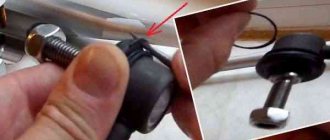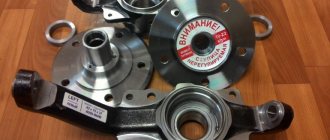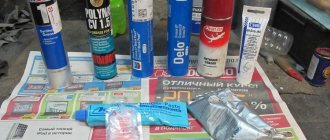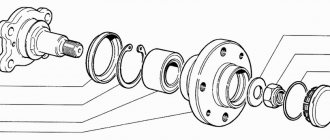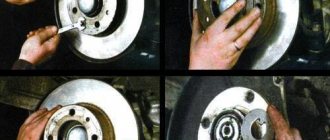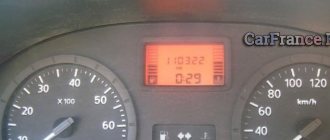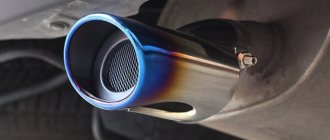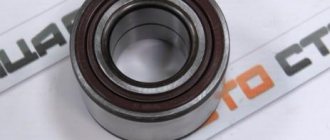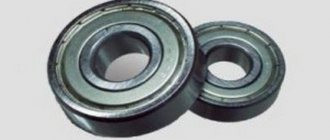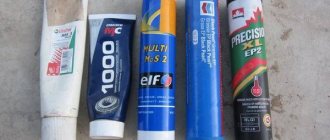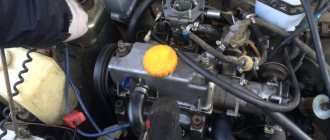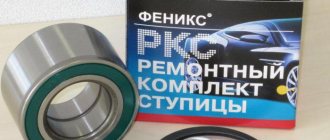Bearings
The front and rear hubs of a car are
one of the most loaded units
; they bear all of its weight, absorb all the shocks and shocks, lateral loads in corners and contribute to the unhindered rotation of the car wheel. Its normal operation (like most car mechanisms, however) is impossible without the use of special lubricant. It not only reduces rolling friction, but also protects the bearing from dust, water and dirt.
Life time
Wheel bearings in cars directly depend on the quantity and quality of lubricant in it, so it is necessary to lubricate all holes regularly. If you do not add lubricant in time, the exhaustion of the life of the old lubricant can cause rapid destruction of the wheel bearing, and soon it will fall apart quite quickly.
You can find many varieties of such lubricants on sale. Let's figure out which lubricant is better suited for use in wheel bearings, how its different modifications differ and what they are designed for.
First, let's decide what we want.
Classification of lubricants
There are 5 main types used in the automotive industry:
- Lithium-containing compounds
- Materials consist of base oils and a thickener - lithium compounds.
Various additives can be added - corrosion inhibitors, extreme pressure inhibitors, and fillers. The advantages of the product
are versatility, availability, good lubricating properties, and low price.
Disadvantages
- they do not always prevent corrosion well; contact can damage plastic parts.
One of the most honored national brands for decades is Litol 24
. Modern lithium greases have higher consumer characteristics; - High-temperature compounds
- They contain copper and nickel compounds in finely dispersed form.
Advantages
- can be used under extreme temperature conditions, resistance to water, increased protection of parts.
Cons
- some experts believe that there are none. This type includes Castrol LMX, Liqui Moly LM 50 Litho HT, MC BLUE 1510; - Compounds containing polyurea
- Modern development. The composition also contains silica gel (moisture absorber) and a stabilizer - calcium sulfonate. Withstands high temperatures, briefly up to 220°C degrees. This type includes the popular brand AIMOL Greasetech Polyurea EP2. - Molybdenum-based compounds
- Contains molybdenum disulfide.
Compounds with molybdenum are popular among professionals. Advantages
- reduce friction, can increase anti-wear properties, fight against corrosion, long service life - up to 100,000 km.
Disadvantages
- does not tolerate contact with water, otherwise a reaction begins with the release of sulfuric acid, which corrodes metal parts; contains abrasive substances. This includes domestic Fiol and CV joints-4; - Perfluoropolyether (plastic) grease
- According to recent surveys, considered the best wheel bearing grease on the market, it is recommended to use Teflon additives.
They are used in premium cars and sports cars that develop great speed. Disadvantages
- for owners of ordinary cars - a very high price.
Additional Tips
The service life of the lubricant is usually from 35 to 45 thousand kilometers traveled. But it is very important to take into account the conditions and intensity of use of the vehicle. Before purchasing, it would be a good idea to read the recommendations of the car manufacturer.
When choosing a lubricant for wheel bearings, the following factors must be taken into account:
- Steel type. The iron from which the element is made is of great importance.
- Intensity of vehicle use. If the car is used constantly, the lubricant must withstand stable loads.
- Load level. When it comes to components and mechanisms that are subject to maximum load, it is necessary to select appropriate lubricants.
- Bearing type, speed and frequency of its rotation.
- Level of protection of the mechanism from dirt and moisture.
Experience suggests that the optimal solution for many will be to purchase high-temperature lubricant. Otherwise, the substance will quickly leak out and the bearing will run dry. Before using a new product, be sure to remove any remaining old substance from the assembly. You need to lubricate the bearing wisely - saving sooner or later will lead to a wedge, and if there is an excess of substance, it will begin to be squeezed out.
Lubricant requirements for wheel bearings
- the lubricant should function normally when heated to 120°C (during rapid movement, the hub bearings heat up, plus heating from the operation of the brakes);
- maintain efficiency, namely not freeze to -40°C;
- maintain working viscosity in this temperature range;
- do not change its qualities when exposed to moisture;
- reduce wear on the working surfaces of bearing parts;
- protect the hub assembly from rust;
- do not damage plastic and rubber products of vehicle components;
- be durable, retain its composition for a long time;
These problems were solved by manufacturers in different ways, hence the diversity.
The need to lubricate rotating points
Fundamentally, the device is aimed at reducing the resistance to movement of two surfaces. In designs without metal balls, you can get rid of contact by introducing a lubricating layer into the space. It can be very different, from solid to gaseous. A logical step in the design was the creation of mechanisms in which rollers began to perform the interlayer function. But it is impossible to completely eliminate friction. Therefore, these products also require the use of special substances.
The absence or contamination of the coating leads to rapid wear: overheating, deformation due to abrasion of the shafts, and ultimately, failure of the entire assembly. Engineers have the term “jamming”; if used incorrectly, after changing the geometry, it stops rotating, and as a result, an emergency situation occurs. One striking example is the tragedy that occurred at the Sayano-Shushenskaya hydroelectric power station, where several hundred people were injured due to the breakdown of a support device.
Criterias of choice
- The main thing
is, of course, how the machine is operated. Ambient air temperature - a region with cold and long winters and the south, where asphalt melts in summer, will require different lubricants. - How you operate the car
- how fast you drive and how hard you brake. - Here you can add the general level of load
on the machine and its components. If it is constantly in operation, has a high monthly mileage, and is fully loaded, it is worth choosing expensive lubricants that maximize the service life of the hub bearing. - Special conditions
. If you are an off-road racing enthusiast, there is a good chance that dirt will get into the wheel bearing, and the loads can be quite large. It is worth choosing compounds with good protection, checking and changing the lubricant in the hubs more often. - It is worth listening to the manufacturer's recommendations
, which are in the documentation.
That is, the best lubricant for hub bearings is the one that suits you and your car.
Car generator
Many drivers know the characteristic sound that appears before the charge disappears. The units are supplied with a factory lubricating layer. But small linear dimensions, intensive use and aggressive environment (moisture, dust, anti-icing agents on roads) negatively affect service life. Therefore, this product uses special types of filler, such as: “Ciatim 201” and “OKB-122-7”. They withstand overheating well and are quite resistant to external influences.
What lubricant should not be used?
Of course, not all lubricants are suitable for this application:
- grease, although it is a grease, will not protect the bearing at low or high temperatures;
- graphite lubricants have an abrasive effect and are not suitable for use in ball bearing units;
- lubricants with a silicone or petroleum jelly base lose their lubricating properties even at 60°C, leaving the ball bearings unprotected;
- CV joint-4 is a controversial option. Still, this composition is designed for rougher use;
- compounds containing only a hydrocarbon lubricant base with a small proportion of additives. They are designed rather for preservation of mechanisms, passive protection, rather than high load.
Rating of the best lubricants for general loads
If you are not going to break records in Formula 1, we recommend choosing the following popular brands:
| Name | Characteristics | Catalog link |
| Liuqui Moly LM 50 | High temperature grease. Universal, provides good protection against corrosion and scuffing at high temperatures. Water resistant. Operates from -30°C to +160°C. She has a special dark blue color. | 7569 |
| Step Up High Temperature | High temperature lithium grease for ball and roller (including needle) bearings. The lubricant contains many additives that improve its properties. Maintains protection when dirty. Operates from -40°C to +250°C. | SP1608 |
| Castrol LMX Li-Complexfett | Imported modification of Litol-24. High stability of properties over the entire operating temperature range - from -35°C to +250°C. Adhesion of the protective film to metal, resistant to water. Long mileage before replacement. Characteristic green color. | 4506210098 |
| MC-1000 | Lithium grease with recovery effect. Metal-clad additives restore worn parts, inhibit corrosion, and increase bearing life. Use temperature from -40°C to +120°C. | 1101 |
| Litol-24 | Top popularity in the post-Soviet space. One of the simplest lithium greases. Suitable for high loads. Excellently protects parts from moisture penetration and exhibits good sealing properties. Environmentally friendly. Suitable from -40°C to +120°C. |
The best lubricants for special loads
For those whose cars experience more severe loads:
| Name | Characteristics (properties) | Catalog link |
| Mobil Mobilgrease Special | Lithium composition with molybdenum disulfide for ultra-high pressures. Provides complete protection against wear, moisture and corrosion. Does not contain lead or nitrites. Gray or black color. | |
| Fuchs Titan ReolitDuraplex | Also an analogue of Litol. Universal compound for bearings. Effective additive package, stability, water resistance. Long (or even lifelong) service life. | EP2 |
| Valvoline Moly Fortified | Universal lithium grease. The addition of molybdenum disulfide reduces friction. Has proven itself well when working in wet conditions. Operates from -20°C to +140°C. | 3921 |
| RW Grease U 100 | High quality mineral grease with polyurea and additives. Temperature stability and long service life. Node protection. Retains its qualities from -20°C to +180°C. | U100 |
| EFELE SG-311 | Synthetic frost-resistant compound, plastic down to -60°C. High speed. Not harmful to plastic and rubber. | SG311 |
Wheel Bearing Maintenance
As already mentioned, the period (kilometers) after which it will be necessary to fill the front and rear wheel bearings with grease is determined by the manufacturer.
Usually it is about 40,000 km. Under intense loads, it is better to reduce the interval between servicing wheel bearings. When a high-quality compound is used and there is no reason to doubt the quality of the installed wheel bearing, it is better to listen to the recommendations. Experts recommend giving preference to high-temperature lubricants, but for a machine that is not very heavily loaded (and a calm driver), a simpler one, such as lithium, is also suitable.
When replacing, the old grease must be removed. Apply new lubricant in sufficient quantities, but not in excess. It should fill all cavities of the cage in the bearing, but not protrude.
Stories of car owners
“I was wondering whether it is necessary to lubricate the wheel bearing before installation, since it should already be prepared for use. I decided that the manufacturer himself was puzzled by this problem, but, as practice has shown, no, the next day I had to disassemble and lubricate everything again.”
Owner of VAZ 2114:
“I started to notice that there was a certain squealing noise coming from the rear wheel. A similar sound appeared only when the speed was about 90 km; it did not happen either lower or higher. Having reached and removed the rear hub, it became obvious that the grease content was extremely low, I added it and everything was fine.”
“Once I lubricated the bearing and everything began to work like clockwork, but after a while the problem returned, and soon. Again I had to disassemble the wheel and when I got to the hub fixing ring, everything became obvious, it was poorly secured and because of this the lubricant was gone, and the bearings were filled with debris. I cleaned it, lubricated it, and the swallow began to fly again.”
How to properly lubricate a sealed bearing
To lubricate a closed bearing when the protective washers cannot be removed, one way to deliver the lubricant inside is to warm it well (to a liquid state) in a metal bowl and lower the bearing there for a while, let it cool, and remove any remaining lubricant from the surface. Liquid lubricant will get inside through the existing gaps. True, old grease cannot be removed this way.
New sealed bearings from a reputable manufacturer, unless they have been in storage for several years, do not need additional lubrication - there is a sufficient amount of the correct lubricant.
We hope this brief review has helped you understand lubricants and will help you consciously choose the most suitable one from the brands listed above and successfully use it for hub bearings. Good luck on the roads!
